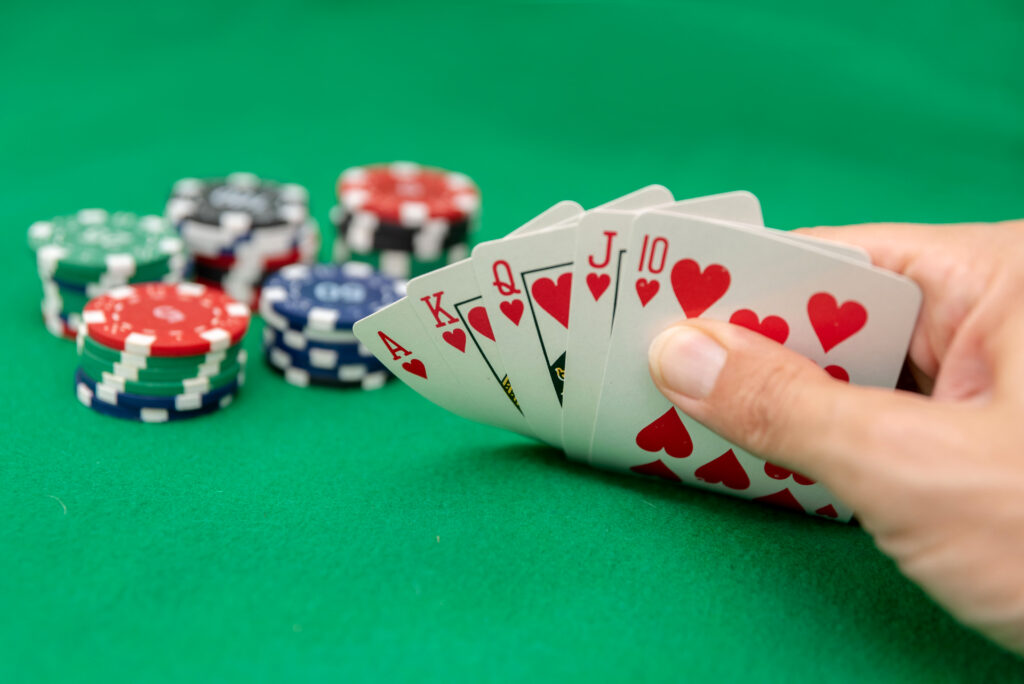Call, Raise And Fold In Poker: What Do They Mean?
If you’re new to poker or want to understand the game better, knowing a few key actions is important. Terms like “call,” “raise,” and “fold” come up in almost every hand, so understanding what they mean is essential.
In this blog post, we’ll explain each of these actions clearly, with practical examples to show how they work during a game. There’s also a handy FAQ at the end to answer any other questions you might have.
Read on to learn more.

What Does Call Mean In Poker?
If you choose to “call” in poker, you’re matching the current bet made by another player. This lets you stay in the round without increasing the amount you’re putting at stake. It’s a simple way to keep your place in the game.
You might decide to call if you want to see what happens next, but don’t want to raise the stakes just yet. Whether you call will often depend on your cards, the size of the bet, and how other players are acting. It’s always a good idea to consider your budget and only call if you’re comfortable with the amount involved.
Call In Poker Example
Imagine a table with three players. The first player places a bet of £2. The second player wants to stay in the game but doesn’t wish to increase the bet, so they call by putting £2 into the pot as well.
Next, the third player faces the choice. If they also want to continue without raising, they call by matching the highest current bet of £2.
This example shows how calling works in practice—players match the existing bet if they want to remain involved in the hand.
What Does Raise Mean In Poker?
To “raise” in poker means choosing to increase the current bet. If you decide to raise, you first match the amount already bet, then add extra for others to match if they want to stay in the hand.
Raising can be used to apply pressure on other players, whether you feel certain about your hand or want to challenge opponents to keep playing. This move raises the stakes for everyone involved in the round.
If you consider raising, it’s important to do so within your budget and comfort level. Being mindful of your limits ensures you can enjoy the game without overextending yourself.
Raise In Poker Example
Imagine there are three players in the hand. The first player places a bet of £2. Instead of simply matching this, the second player decides to raise the bet to £6. This means the new amount for others to match is now £6.
The remaining players then face a decision: whether to call the higher bet, raise it further, or fold and leave the round.
This example shows how raising not only increases the pot but also influences the choices available to everyone else at the table.
What Does Fold Mean In Poker?
To “fold” in poker means that players lay their cards face down and step away from the current hand. By folding, they give up any chance of winning the pot in that round and wait for the next hand to start.
Folding is commonly chosen when a player decides not to match the latest bet or feels their cards aren’t strong enough to continue. It’s a routine part of the game and happens often.
Being comfortable with folding when the situation calls for it is a valuable part of playing poker thoughtfully.
Fold In Poker Example
Here’s a practical example: the first player places a bet of £3. The second player looks at their cards and decides not to continue, choosing to fold by placing their cards face down.
By folding, the player does not add any more chips to the pot, and the game moves on without them for that round.
Folding allows players to preserve their chips and manage their overall balance across multiple hands, rather than committing more to a single round.
Poker FAQs
When Should You Call In Poker?
You might call if you want to stay in the hand but are happy to simply match the latest bet without increasing it. You might want to check that any call keeps you within your set limits and budget.
When Should You Raise In Poker?
Raising may make sense if you think your hand is strong or if you want to see if others will keep playing at a higher cost. Remember to consider your own limits and stick to them.
When Should You Fold In Poker?
You might consider folding if you no longer want to match the latest bet or don’t feel your cards give you a good enough chance. Making timely folds can help with considered play.
What Is a Check-Raise In Poker?
A check-raise is when a player first checks (chooses not to bet), then raises after another player bets. This move can change the pace of the game and is one of several advanced actions players use.
**The information provided in this blog is intended for educational purposes and should not be construed as betting advice or a guarantee of success. Always gamble responsibly.
